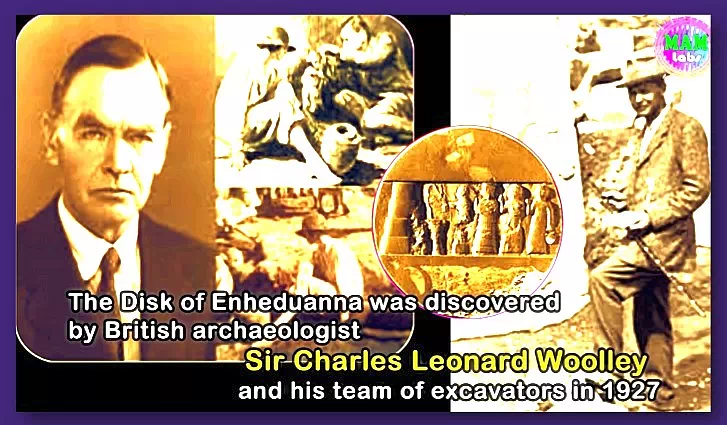The World’s First Known Author/Poet
The Princess/The Priest
The Princess /
The Priest

Enheduanna or Enheduana is widely considered as the world’s first known author or poet.
She belongs to the ancient Mesopotamia lived in the 23rd century BC (approximately 2285 BC – 2250 BC).
- Mesopotamia is a Greek word meaning ‘between two rivers’.
It was the land between the Tigris and the Euphrates rivers and of the place of several ancient civilizations those days. It now corresponds to Western Asia, mostly today’s Iraq, Kuwait, and the eastern parts of Syria, South-eastern Turkey, and regions along the The Turkish-Syrian and Iran-Iraq borders.
The contemporary civilizations to Mesopotamia, dated between c. 3500 and c. 3000 BC, are:
- Ancient Egypt: It started with the reign of Egypt’s first king, Narmer, in approximately 3100 BC, and ended with the death of Cleopatra VII in 30 BC. It was situated in the place that is now the country Egypt and concentrated along the lower reaches of the Nile River.
- Norte Chico: It dates back between c. 3,700 BC and c. 1,800 BC. It is now the region of north-central coastal Peru. It is also called Caral or Caral-Supe civilization and includes as many as thirty major pre-Columbian population centres.
- Minoan Civilization: It flourished from c. 3000 BC to c. 1450 BC and finally ended around 1100 BC. It is also called as Bronze Age Aegean civilization. Its geographical range is Aegian sea especially Crete (the largest island of Greek).
- Ancient China: Most historians agree that ancient China civilization occurred sometime around 2000 BCE around the Yellow River. Its significant contributions to the world are papermaking, printing, gunpowder and the compass.
- Mesoamerica: It is the complex of indigenous cultures that developed in parts of Mexico and Central America in about 1200 BC, known as the Olmec civilization. And.
- The Indus Valley: It is also known as the Harappa and Mohenjo Daro civilization lasted from 3300 BC to 1300 BC. It was a Bronze Age civilisation and extended from modern-day northeast Afghanistan to Pakistan and northwest India.
In those days Mesopotamia civilization refers to the kingdoms ruled by Sumerians, Akkadians, Assyrians, and Babylonians.
Sumerians are the people of Sumer.
Sumer is the earliest known and one of the first civilizations in the world.
Akkadians built the first ancient empire of Mesopotamia around 2900 BC to 2350 B.C. after the long-lived Sumerian civilization. Akkadian and Sumerian speakers were united under one rule.
Assyrians are also Mesopotamia’s ethnic group in the Middle East during, possibly, around the 25th century BC.
Babylonians were ancient Akkadian-speaking people of central-southern Mesopotamia emerged in 1894 BC.
Enheduanna was the daughter of the Akkadian Emperor Sargon the Great. Her mother was probably Queen Tashlultum.


Sargan is identified as the first ruler of the Akkadian Empire, perhaps, the first to rule over an empire, as per recorded history.
He established the vast Akkadian Kingdom with his conquests of the Sumerian city-states in the 24th to 23rd centuries BC.
The city of Akkad becomes one of the largest in the world, and northern and southern Mesopotamia were united for the first time in history.
- Giparu at Ur was Enheduanna’s main residence.
She was the first known woman to hold the title of EN appointed by her father king Sargon.
In Mesopotamia civilization, a great political importance was often given to royal daughters with the title of En.
Her father Sargon, offered her another appointment, as the High-Priestess of the goddess Inanna, and the moon god Nanna, Suen at the temples in, Ur, (in modern-day Southern Iraq).
Nanna-Suen was the Mesopotamian moon god.
Moon god is called Nanna by Sumerians and Suen or Sin by Akkadians.
Enheduanna means “Ornament of Heaven” which reflects the celestial nature of her occupation as High Priestess.
In the ancient world, there was male domination in the areas of scribes or writers.
But, in the rich literary history of Mesopotamia her works form an important part.

She composed several hymns and myths.
Most of her work is available in translation at the Electronic Text Corpus of Sumerian Literature (ETCSL) at the Oriental Institute of the University of Oxford in Britain.
Enheduanna composed 42 hymns addressing the temples across Sumer and Akkad empires. This collection is known as ‘The Sumerian Temple Hymns’.
The important one is about the goddess Inanna titled ‘The Exaltation of Inanna’ or ‘Nin-me-sar-ra ‘. (A “contemporary poetic adaptation” of it by the Minnesota author Cass Dalglish was published in 2008).

She dedicated her works to the goddess Inanna.
Goddess Inanna is the daughter of moon god Nanna in Mesopotamian myths.

Inanna is an ancient Mesopotamian goddess of love, beauty, sex, war, justice and political power.
Sumerians worship her to acquire power and fortune.
Ishtar was another name of Inanna given by Akkadians, Babylonians, and Assyrians.
‘The Exaltation of Inanna also describes Enheduanna’s expulsion from Ur during the reign of her brother Rimush, having suspected her involvement in some form of political turmoil.

She was eventually reinstated in that post.
Her hymns and myths were written in cuneiform.
Cuneiform is an ancient form of writing using clay tablets.
Archaeological and textual sources reveal that two seals have been excavated at the Royal Cemetery at Ur, bearing her name, belonging to her servants and dating to the Sargonic period.
An alabaster disc was also excavated in the Giparu at Ur bearing her name and likeness.
The originality and authorship of her works is clearly asserted by her temple hymns.
In those hymns, Enheduanna states: “My king, something has been created that no one has created before.
She also comments on the difficulties of the creative process — apparently, writer’s block.
Her written works are deeply personal in subject, containing numerous biographical features.
She describes that she spent long hours over her compositions by night so as to perform them in the day.
Enheduanna’s poetry has a reflective quality of the divine muse, highlighting the artistic skill required for the compositions.

Aside from poetry, other sources for Enheduanna’s life have been discovered by archaeologists.
These include cylinder seals belonging to her servants, and an alabaster relief inscribed with her dedication.
The Disk of Enheduanna was discovered by British archaeologist Sir Charles Leonard Woolley and his team of excavators in 1927.

Being not only the earliest known poet in the world history, Enheduanna has received substantial attention in feminism at the International Women’s Day in 2014, at a pre-launch event for Niniti International Literature Festival, hosted by the British Council in Erbil, Iraq.

Oxford Professor of Ancient History, Eleanor Robson described Enheduanna as “a wish-fulfillment figure…a marvelously appealing image”.

In the science television series ‘Cosmos – A Spacetime Odyssey’, Enheduanna is the subject of the episode. She was voiced by Christiane Amanpour.
Her written praise of celestial deities has been recognised in the field of modern astronomy.
In 2015, the International Astronomical Union named a crater on Mercury after Enheduanna, honouring her descriptions of stellar measurements and movements as possible early scientific observations.
Her name was suggested by Gagan Toor, Indian space enthusiast, who is one of the winners of a NASA contest to name five new craters on Mercury.

- (Crater = A bowl-shaped depression formed by the impact of a meteorite or bomb).
Though there are doubts about her identification as the first poet and a High-Priest, the historical record clearly indicates Enheduanna as the composer of ancient literary works, and this is undoubtedly an important aspect of the traditions surrounding her.

Enheduanna continued to be remembered as an important figure after her death, perhaps even attaining semi-divine status.
All Blogs & Vlogs from mamlabs.net

